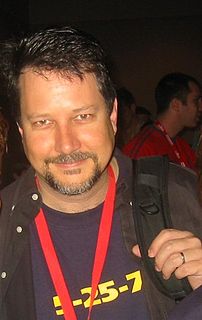Top 56 Quotes & Sayings by John Knoll
Explore popular quotes and sayings by an American artist John Knoll.
Last updated on November 25, 2024.
When I first started in the industry, there were - this is prior to the era of computer graphics and all these digital tools - there were some pretty rigid, technologically imposed limitations about how you shoot things, because if you didn't shoot 'em the right way, you couldn't make the shot work.
It's definitely an issue if the actor has passed away without stating any intention or desire about how his or her likeness should be dealt with. Then it falls to their estate. That's a problem that will start solving itself. Now the technology exists, and actors are aware of this and can make their wishes known.
I think it's an important part of the visual effects supervisor's job to get really deeply embedded in production and keep us all focused on trying to generate the best result. I'm not proprietary about, 'I would rather do this effect than let physical effects do it.' No, let's do the smartest thing for the movie.
If you need to do a movie where you have an army of 10,000 soldiers, that's a very difficult thing to shoot for real. It's very expensive, but as computer graphics techniques make that cheaper, it'll be more possible to make pictures on an epic scale, which we haven't really seen since the '50s and '60s.
In high school and college, I'd set a bunch of goals for myself. I wanted to be the lead effects supervisor on one of these really big, innovative visual effects productions, something on the scale of a 'Star Wars' movie. And I wanted to work on a project that wins the Academy Award for best visual effects.
























